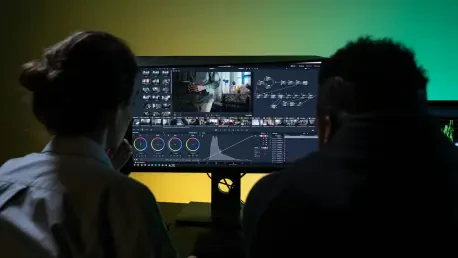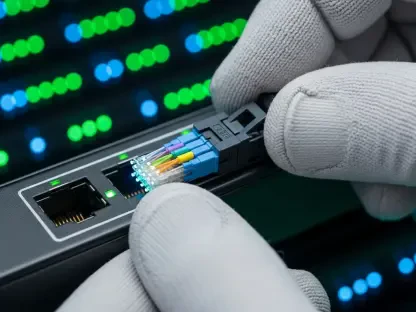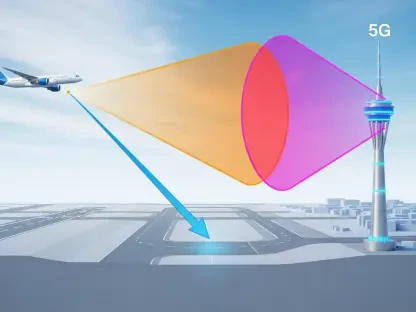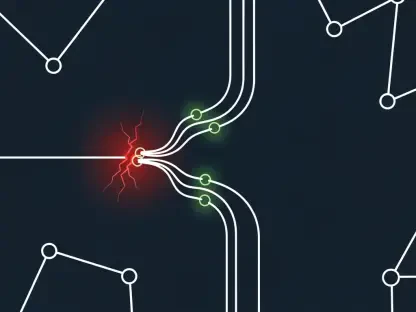In a world where digital experiences define daily life, the demand for seamless, high-quality video streaming and immersive content is pushing the boundaries of current network capabilities, creating an urgent need for innovation. Picture a scenario where virtual reality meetings, 3D gaming, and AI-generated media stream effortlessly on any device, no matter the location. This vision is no longer a distant dream but a tangible goal, thanks to pioneering efforts in 6G technology. Nokia and Ericsson, two giants in telecommunications, are at the forefront of this revolution, collaborating to redefine how video technology will operate in the hyper-connected era. Their work promises to transform industries and personal experiences alike, setting a new standard for data efficiency and connectivity.
Why 6G Video Technology Is the Next Big Leap
The evolution from 5G to 6G represents more than just a speed upgrade; it’s a fundamental shift in how data-intensive applications will function. Current 5G networks, while advanced, struggle to keep pace with the exponential growth of video content, which accounts for over 80% of global internet traffic according to recent Cisco studies. Nokia and Ericsson are tackling this challenge head-on by developing 6G video codecs that prioritize unprecedented compression and quality, ensuring that even the most demanding applications run smoothly.
This leap forward is essential for enabling futuristic use cases, such as holographic communication and real-time AI content creation. The collaboration with Fraunhofer Heinrich Hertz Institute has already yielded promising results, demonstrating codecs that reduce data load without sacrificing clarity. Such innovations hint at a future where buffering and lag become relics of the past, reshaping expectations for digital interaction.
The Stakes of 6G in a Hyper-Connected World
As society becomes increasingly reliant on bandwidth-heavy technologies, the limitations of existing infrastructure are glaringly apparent. Virtual reality, autonomous vehicles, and smart industrial systems require networks capable of handling massive data volumes with minimal latency. 6G is poised to meet these needs by offering speeds up to 100 times faster than 5G, alongside enhanced energy efficiency, addressing both performance and sustainability concerns.
The urgency for 6G extends beyond consumer convenience to critical sectors like healthcare and transportation. For instance, real-time data transmission in telemedicine or self-driving car ecosystems could save lives, but only with a robust network foundation. Nokia and Ericsson recognize these high stakes, driving their research to ensure 6G supports a world where connectivity underpins every facet of progress.
Nokia and Ericsson’s Groundbreaking Work on 6G Codecs
At the heart of this technological shift is a strategic partnership between Nokia, Ericsson, and Fraunhofer Heinrich Hertz Institute, focusing on advanced video compression software for 6G networks. Their recent breakthrough—a codec with significantly higher efficiency than current standards—stands out for maintaining simplicity despite its cutting-edge capabilities. This balance is crucial for widespread adoption across devices and platforms.
The potential applications are vast, ranging from immersive gaming experiences to industrial automation requiring real-time video feeds. With deployment timelines targeting 2029 to 2030, this technology aligns with the growing demand for AI-generated content, which necessitates optimized data handling. Early tests suggest these codecs could reduce bandwidth usage by up to 50% compared to today’s standards, a game-changer for network operators and end-users alike.
This collaboration exemplifies how targeted innovation can address specific pain points in digital ecosystems. By focusing on video, which dominates data consumption, the partnership ensures that 6G will not just be faster but smarter, paving the way for seamless integration into everyday tools and systems.
Expert Perspectives on 6G Video Advancements
Industry leaders are vocal about the transformative potential of these developments. Representatives from Nokia have emphasized their commitment to creating a “digital fabric” that supports next-generation experiences, highlighting video as a cornerstone of this vision. Similarly, Ericsson’s focus on sustainable data solutions underscores the importance of energy-efficient codecs in reducing the carbon footprint of future networks.
Research from Fraunhofer Heinrich Hertz Institute sheds light on the technical hurdles overcome, such as balancing compression with computational demand. Broader industry analysis, including reports from Gartner, predicts that 6G could drive a 40% increase in global data efficiency by 2030, reinforcing the significance of these advancements. Such insights provide a credible foundation for understanding the long-term impact on data consumption patterns.
These expert voices collectively paint a picture of cautious optimism. While challenges remain, including standardization and hardware compatibility, the consensus points toward a future where 6G video technology redefines connectivity benchmarks across multiple sectors.
Preparing Businesses and Consumers for 6G Video Tech
For stakeholders eager to stay ahead, proactive steps are essential as 6G approaches. Businesses, particularly in entertainment and manufacturing, should begin assessing infrastructure needs, investing in compatible hardware, and partnering with tech providers to test early solutions. This preparation can position companies to capitalize on 6G’s capabilities from day one.
Consumers, meanwhile, stand to benefit from understanding how 6G will enhance daily digital interactions. Keeping abreast of device upgrades that support next-gen networks will ensure access to improved streaming and gaming experiences. Educational resources and industry updates can serve as valuable tools for navigating this transition over the next few years.
Monitoring milestones from 2025 onward, such as prototype releases and pilot programs, offers a practical roadmap for both groups. Engaging with early adoption opportunities, especially in high-impact areas like telemedicine or smart cities, could provide a competitive edge or simply a better quality of life as 6G rolls out.
Looking back, the journey toward 6G video technology unfolded as a testament to collaborative innovation, with Nokia and Ericsson leading the charge. Their efforts tackled pressing data challenges head-on, setting a foundation for a more connected world. Reflecting on this progress, the next steps involve scaling these solutions through global partnerships and rigorous testing. Industries and individuals alike need to adapt by prioritizing education on emerging standards and investing in supportive technologies. The path forward requires sustained commitment to ensure that the promise of seamless, high-quality video becomes a universal reality by the end of the decade.









